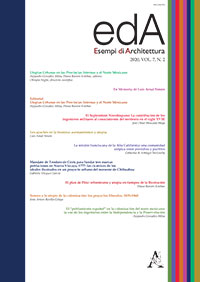Estratto da
ESEMPI DI ARCHITETTURA
International Journal of Architecture and Engineering
La Misión Franciscana De La Alta California: Una Comunidad Utópica Entre Presidios Y Pueblos. The Franciscan Mission Of Upper California: An Utopian Community Amidst Presidios And
ESEMPI DI ARCHITETTURA
International Journal of Architecture and Engineering
La Misión Franciscana De La Alta California: Una Comunidad Utópica Entre Presidios Y Pueblos. The Franciscan Mission Of Upper California: An Utopian Community Amidst Presidios And

The expansion of the process of catechization and colonization by New Spain into its northernmost territory of Alta California relied on three institutions: the presidio (a military outpost), the pueblo or civil town and the mission where resided Franciscan friars and the recently Christianized native population. Each institution generated a distinct settlement in accordance with its specific function in the territory: the presidio and pueblo as part of the project of pacification and control of the territory that would allow for its exploitation and the mission, interested in the formation of a Christian community. This paper examines the spatiality of these settlements in Alta California illustrating their contrasting nature. The author argues –following Françoise Choay who considers as one of the central elements of utopia the criticism of contemporary society-- that thedistinctive distribution of the Franciscan mission in this territory reflects utopian ideas, whereby the Christian community is established in contrast to the pagan presidios and civil towns. Among the characteristics identified is the enclosure (to protect the neophytes from the evil influence of the presidios and pueblos) and the inclusion of housing (for families and in particular for the women). These elements would also be instrumental in the process of acculturation of the natives. Additionally, the unique layout of the missions –which does not appearto be the seed for a town—raises questions as to the future the friars envisioned for the missions.
| pagine: | 43-60 |
| DOI: | 10.4399/97888255341223 |
| data pubblicazione: | Giugno 2020 |
| editore: | Aracne |








